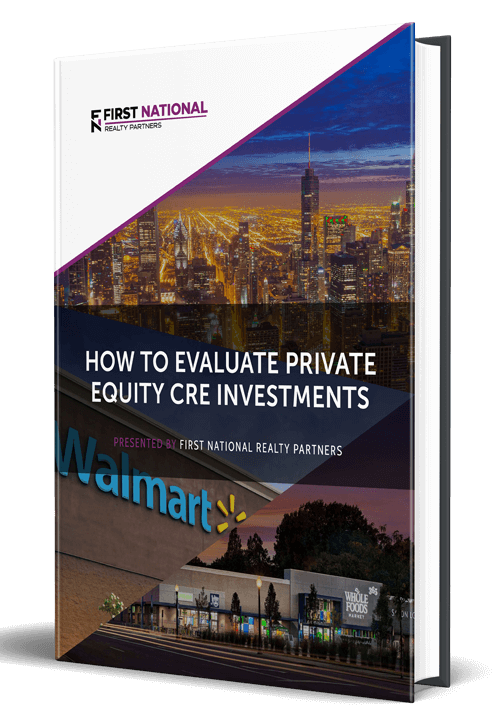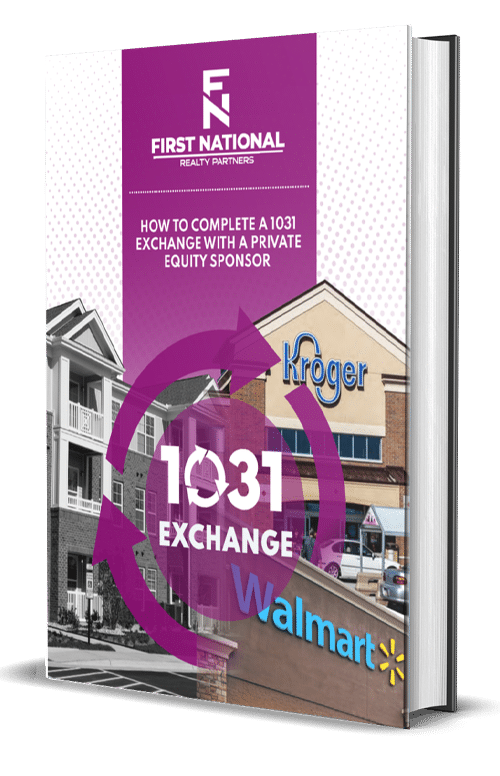In commercial real estate investment, there is a widely held belief that using debt to finance the purchase of an asset helps boost its return. In most cases, this is true. But, there are certain scenarios where more debt can actually cause the investment return to decrease. In these scenarios, the property is considered to be “negatively leveraged.”
In this article, we are going to define what negative leverage is and illustrate how it can impact the returns on a commercial real estate investment. By the end, readers will have greater awareness of what causes negative leverage and should be able to use this knowledge as part of their investment due diligence process.
At First National Realty Partners, we use debt in all of our deals. However, we are careful to ensure that the terms and structure of the debt does not negatively impact our investment returns. To learn more about our current investment opportunities, click here.
What Is Negative Leverage?
Negative leverage is defined as a scenario where the return actually falls with the addition of leverage. This happens when the interest rate on the debt is higher than the return produced by the cash flows.
In order to better understand what negative leverage is, it is helpful to understand the difference between a “levered” and “unlevered” cash on cash return.
Levered vs. Unlevered Return
A levered return represents an investor’s annual return after debt service. An unlevered return represents an investor’s annual return, assuming a property was purchased with all cash. To illustrate the difference, an example is helpful.
The table below summarizes the details two scenarios, one where a property was purchased with $2.5MM in cash and one where the same property was purchased with $500M cash and $2MM in debt:
| Unlevered | Levered | |
| Purchase Price | $2,500,000 | $2,500,000 |
| Loan Amount @ 80% LTV | $ – | $2,000,000 |
| Interest Rate | 0.00% | 6.00% |
| Amortization (Years) | 0.00 | 30 |
| Annual Debt Service | $ – | $143,892 |
| Net Operating Income | $190,000 | $190,000 |
| Cash Flow After Debt Service | $190,000 | $46,108 |
| Cash on Cash Return | 7.60% | 9.22% |
In the unlevered scenario, the property’s $190M in Net Operating Income (NOI) produces a cash on cash return of 7.60% based on the $2.5MM purchase price. In the levered scenario, the investor gets a loan for $2MM and puts in $500M of their own money. There is $46,108 left after the loan payments have been made, which provides for a cash on cash return of 9.22%.
This is an example of “positive leverage” where the addition of debt boosts the return.
Negative Leverage Explained
Now, consider the same scenario, but notice that the interest rate rises to 8%. In this case, the unlevered return stays the same, but the levered return actually falls to 2.78%. See the table below:
| Unlevered | Levered | |
| Purchase Price | $2,500,000 | $2,500,000 |
| Loan Amount @ 80% LTV | $ – | $2,000,000 |
| Interest Rate | 0.00% | 8.00% |
| Amortization (Years) | 0.00 | 30 |
| Annual Debt Service | $ – | $176,103 |
| Net Operating Income | $190,000 | $190,000 |
| Cash Flow After Debt Service | $190,000 | $13,897 |
| Cash on Cash Return | 7.60% | 2.78% |
This is an example of negative leverage, where the return falls with the addition of leverage due to the interest rate on the debt being higher than the return produced by the cash flows.
Measuring Leverage
When creating a financial model for an investment property, leverage is usually measured by using the loan to value ratio – LTV for short. The higher the LTV ratio, the more levered the property is. Depending on the property’s size, location, real estate market, tenant(s), and type, the lender will put a cap on the loan to value ratio. It is usually around 80%, but could be more or less depending on the specifics of the deal.
The traditional school of thought is that more debt is better. But, if the property is negatively levered this is not the case. In this scenario, each additional dollar of debt can cause the property to become more negatively levered. So, the traditional line of thinking should be updated to clarify that more debt is better, but only if the terms provide positive leverage.
Risks of Negative Leverage
From the example above, the risk of negative leverage is clear. It causes the property’s rate of return to fall when debt is added to the deal.
For real estate investors, negative leverage increases the risk profile of the transaction and decreases the margin for operational error.
Using Negative Leverage In a Real Estate Investment Strategy
As a general rule, negative leverage is not part of a profitable commercial real estate (CRE) investment strategy.
To avoid a negative leverage situation, investors should look closely at the cost of debt relative to the property’s capitalization rate – cap rate for short. In this comparison, the cap rate represents the annual rate of return on a cash purchase. So, as long as the cap rate indicates a higher return than the cost of debt, the property is positively leveraged.
Private Equity & Negative Leverage
Private equity firms, ourselves included, are very careful to negotiate debt terms – loan amount, amortization, interest rate, etc – that do not result in a negative leverage scenario. This is part of the value that they bring to a transaction. However, real estate investors should still perform their own due diligence to ensure they are comfortable with the risk profile of a transaction.
Summary & Conclusion
- Negative leverage is a scenario where the addition of debt in a commercial real estate transaction causes the levered return to be less than the unleveraged return.
- Negative leverage occurs when the borrowing costs are greater than the overall return produced by the property’s cash flow.
- The risks of using negative leverage include lower overall returns as well as more serious consequences if the property’s cash flow cannot keep up with the required mortgage payments.
- Using negative leverage is not a best practice in commercial real estate investing. Private equity firms use their expertise to avoid a negative leverage situation, but investors should also perform their own due diligence to ensure that the risk profile of the deal is consistent with their comfort level.
Interested In Learning More?
First National Realty Partners is one of the country’s leading private equity commercial real estate investment firms. With an intentional focus on finding world-class, multi-tenanted assets well below intrinsic value, we seek to create superior long-term, risk-adjusted returns for our investors while creating strong economic assets for the communities we invest in.
If you are an Accredited Real Estate Investor and would like to learn more about our investment opportunities, contact us at (800) 605-4966 or info@fnrpusa.com for more information.






